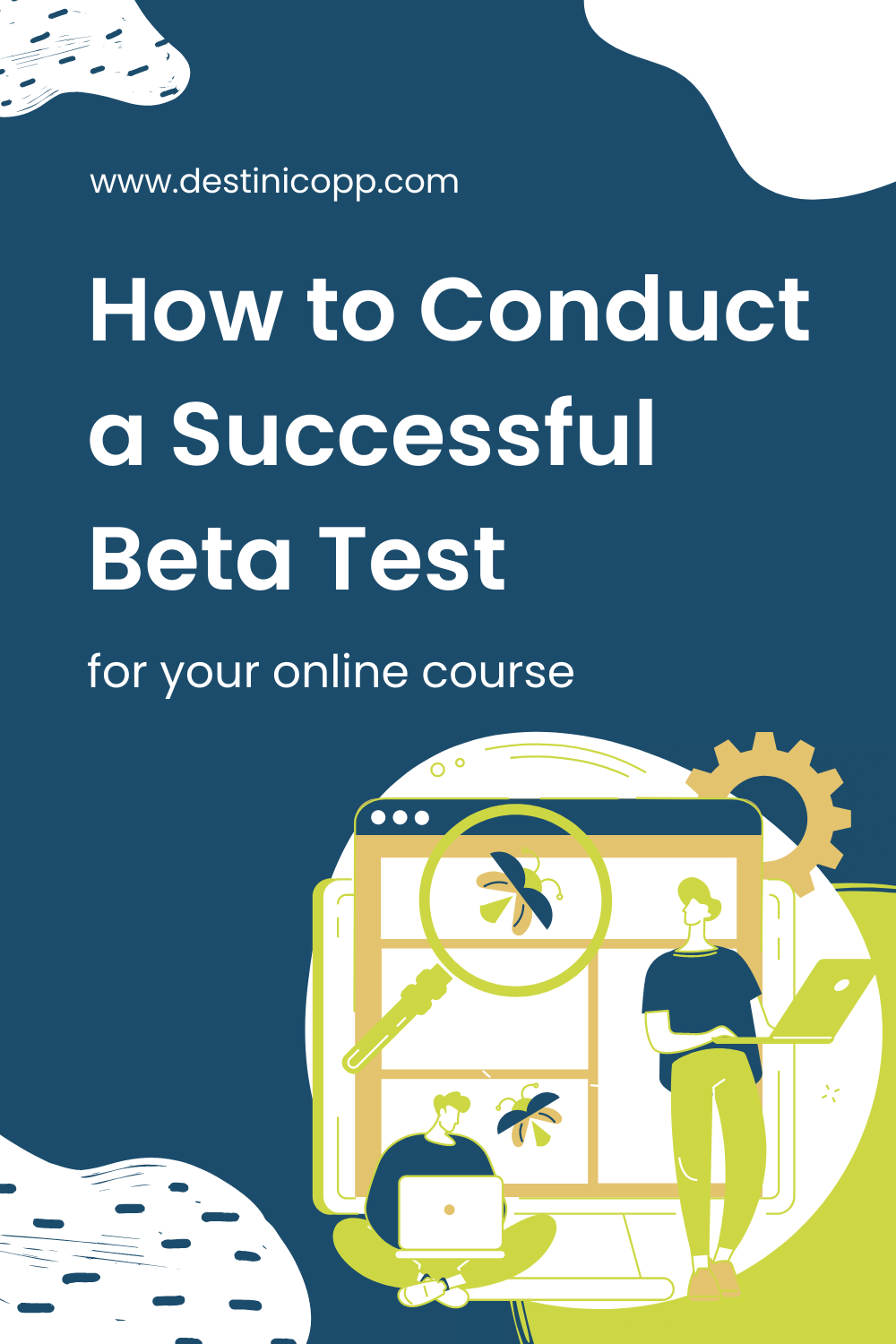How to Conduct a Successful Beta Test (for your online course)
One of the things I recommend when creating a new product like an online course is to start with a MVP, a minimum viable product. This gives you the opportunity to get feedback from your ideal customers and make any necessary modifications prior to your product launch.
The best way to launch a minimum viable product for an online course is through a beta test.
However, before you launch your beta, be sure that you conduct your customer interviews about your future online course. You still need to validate your course idea prior to launching your beta. You also need a solid outline of your course content, so you can set up your beta course landing page.
Why You Should Beta Test
There are several reasons why I recommend that you should beta test:
It gives you time to develop your content. So many creators get stuck at the course creation part of the process and never get their course launched or it takes them 1-2 years to create all the content.
It provides a feedback loop to the course creator.
You can get to know your students on a more intimate basis. You generally beta test with a smaller group and can watch their transformation from Point A (their beginning point) to Point B (their desired state).
It gives you the opportunity to collect testimonials that you can use on your sales page and in your marketing materials for your online course.
The test period will help you figure out the support your students need from you to be successful.
It validates your course (even more) so you are sure you are creating a product that your ideal customer raves about!
Beta Course Landing Page
Once you validate your course idea and prepare your outline, you can create your beta course landing page. This is a simple landing page where you cover the basic elements of your course such as what the student will learn and the benefit they will achieve, the responsibility of the student and your promise to them. You will also need to cover how much it will cost (yes, you can charge for a beta!), and the support you will provide throughout the process to help them succeed.
Additionally, on your landing page, be sure to include the start and end date of the beta, how the course will be delivered such as live workshops or prerecorded videos. Don’t forget to include information about YOU, the instructor, a FAQ section and an enroll button. Be sure to tell your potential beta students when enrollment for the beta ends.
Also, don’t forget to update your terms and conditions for your course agreement and provide the details on your landing page.
How to Deliver Your Beta Test for Your Online Course:
You have two options for delivering your content for your online course.
The first option is to create all content, load into your course platform, and give your students X number of weeks to complete.
The second option (which can be easier and provides an avenue for you to adjust based on feedback), is to create the content as you go. For example, in Week 1, you provide the content for Module 1 (this can be live through a workshop such as a Zoom meeting or through recorded videos). You can get feedback each week. In Week 2, you deliver the content for Module 2, etc.
Both options are fine for a beta test. Personally, I prefer option 2, as it provides a great way for you to modify and adjust based on your student’s feedback.
5 Keys for a Successful Beta:
Set Expectations Upfront
To ensure success for your beta, set expectations upfront with your students. Remind them that this is a beta. Things may not be perfect, but you can still provide great value.
Get Feedback From Your Students
Get feedback along the way from your students and make adjustments as needed. Ask your students where they are getting stuck. This is a great opportunity for you to create a new resource or guide to help them move forward with their transformation.
Have a Support System For Your Students
Be sure you have a support system in place. This can be scheduled office hours, a private Facebook group, or even 1:1 coaching to ensure your student’s success. This also provides a feedback avenue, so you can gauge their progress in your course.
Set Clear Boundaries
Don’t forget to set clear boundaries upfront. For instance, if you are requiring payment for your beta test, be sure that your terms and conditions clearly reflect your refund policy. If you are providing 1:1 coaching, let your students know the end date for scheduling the coaching service.
Collect Customer Testimonials
One of the goals of a beta test is to collect customer testimonials for your course. Give your students an incentive for completing the testimonial. An example would be, if they complete the honest testimonial by X date, they can have full access to your new (revised) course.
Once you complete your beta, you will have great insight into where your students got stuck, how long it takes them to successfully complete the action items and what resources you need to add to your course to help them succeed. Best of all, you will have your testimonials with the results they achieved so you can highlight these successes as social proof for your course launch. Priceless!
Keep Reading:
Pin this and save for later




